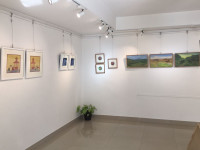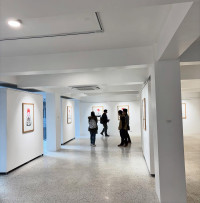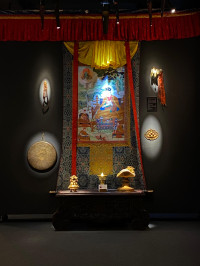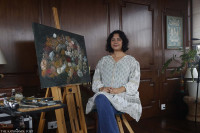Arts
The persistent painter
Artist Pramila Bajracharya talks about her love for the feminine form, abstract cityscapes and how she can’t help but paint every day.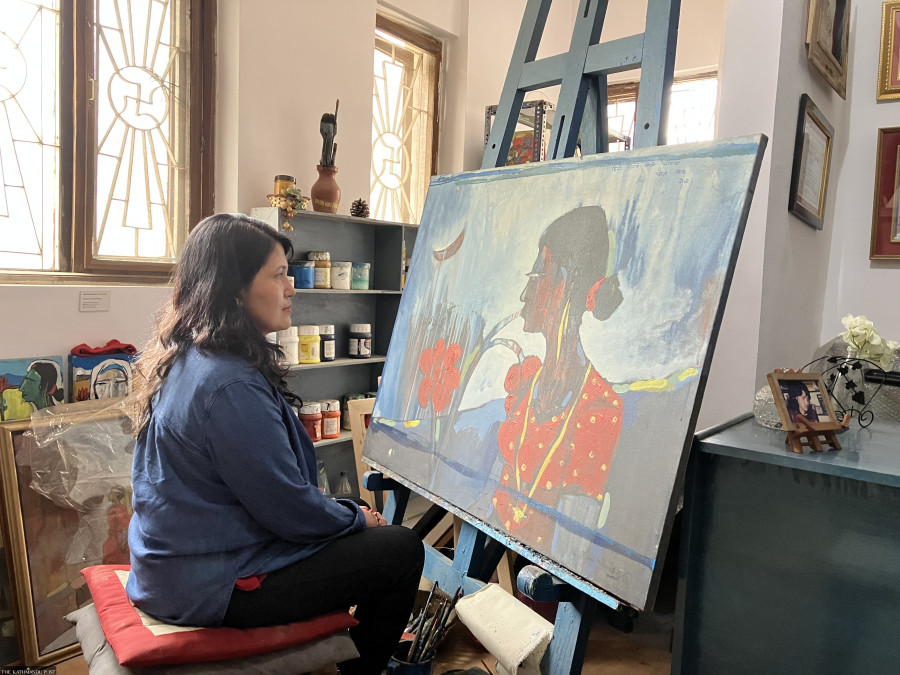
Urza Acharya
“The dust here is ruining my paintings. I’m thinking of moving my works elsewhere,” says Pramila Bajracharya as she shows me the large canvases she’s painted over the years. The studio, which also doubles as a space for art classes, is unassuming. It is right at the corner most junction of Bakhundole, Lalitpur—the newly gentrified hub for cafes and restaurants. It’s a small house. And it’s a small space. Below her art space is a bakery run by her nephew called ‘Sami Crossiant’, where some of her paintings are hung on walls. But the dust has marred the works of their colour. At 11am in the morning, on a sluggish spring day, Bajracharya is still optimistic. For her art. For her future.
“I’m somebody who has to paint every day, and before Covid, my studio was in Harihar Bhawan. But during the lockdown, I couldn’t paint cause there was nothing at home. I’d never felt so lost before,” she recalls, adding that she somehow arranged for some canvases and paints to be brought over at home so she could paint. Now, Pramila doesn’t take any chances. She paints wherever she can.
Looking around the quaint studio, the body of work she has painted over the years is impressive. Paintings adorn almost every wall there is; big and small canvases are piled up, leaning against each other, hoping for some recognition—some movement.
And most paintings have one thing in common—Pramila’s women. Long, elongated, androgynous faces; above them lie sharply drawn eyes that know every little of your secret and, of course, the thin, modest lips that are at once a smile and a frown. These women are what drew me to Bajracharya’s studio. Their faces are so elusive one can’t help but wonder what they are thinking or feeling. “Do you know the painting ‘Three Girls’ by Amrita Sher-Gil?” I ask her. It’s easy to notice some parallels in both artists’ work because the women in their paintings are beautiful yet melancholic. “I’ve heard of her but never seen the painting,” she says as I show her the painting on my phone.
“But why women?” I prod. “I don’t know. I just do. I can’t help it,” she says, smiling. In 1994, Bajracharya recalls visiting Patan to draw and sketch with the newly formed Kasthamandap Art Group. Midst all the architectural marvels, the movement and the chaos, somehow, Pramila was always attracted to the women. “The Newa women wearing haku-patasi, the way their body curves carrying gagris on their waist. There was something so intoxicating about it,” she says.
I’m still not satisfied with her answer. A mere appreciation for the feminine form doesn’t explain why the entire studio is filled with the elusive gazes of Pramila’s women. I ask her about her childhood. “My father brought me up like a boy,” she says. Growing up in a business family in Wangot Tole, Gahabal, in Lalitpur, her father was a strict man. He made jewellery. “My sisters used to stay home and work. But he always sent me out to collect money from our buyers.”
Pramila is the fifth child. She has four older sisters and one young sister, and two brothers after her. I point out that perhaps her parents must have wanted a son. “Well, that was what society was like back then,” she says.
Except for her eldest sister, all the siblings in the family completed their education. “I was already good at drawing, so my father agreed to send me to art school,” she says, revealing how she got into the Lalit Kala Campus in 1993. “But art was still secondary at home. I could only leave after I finished all the chores,” she says.
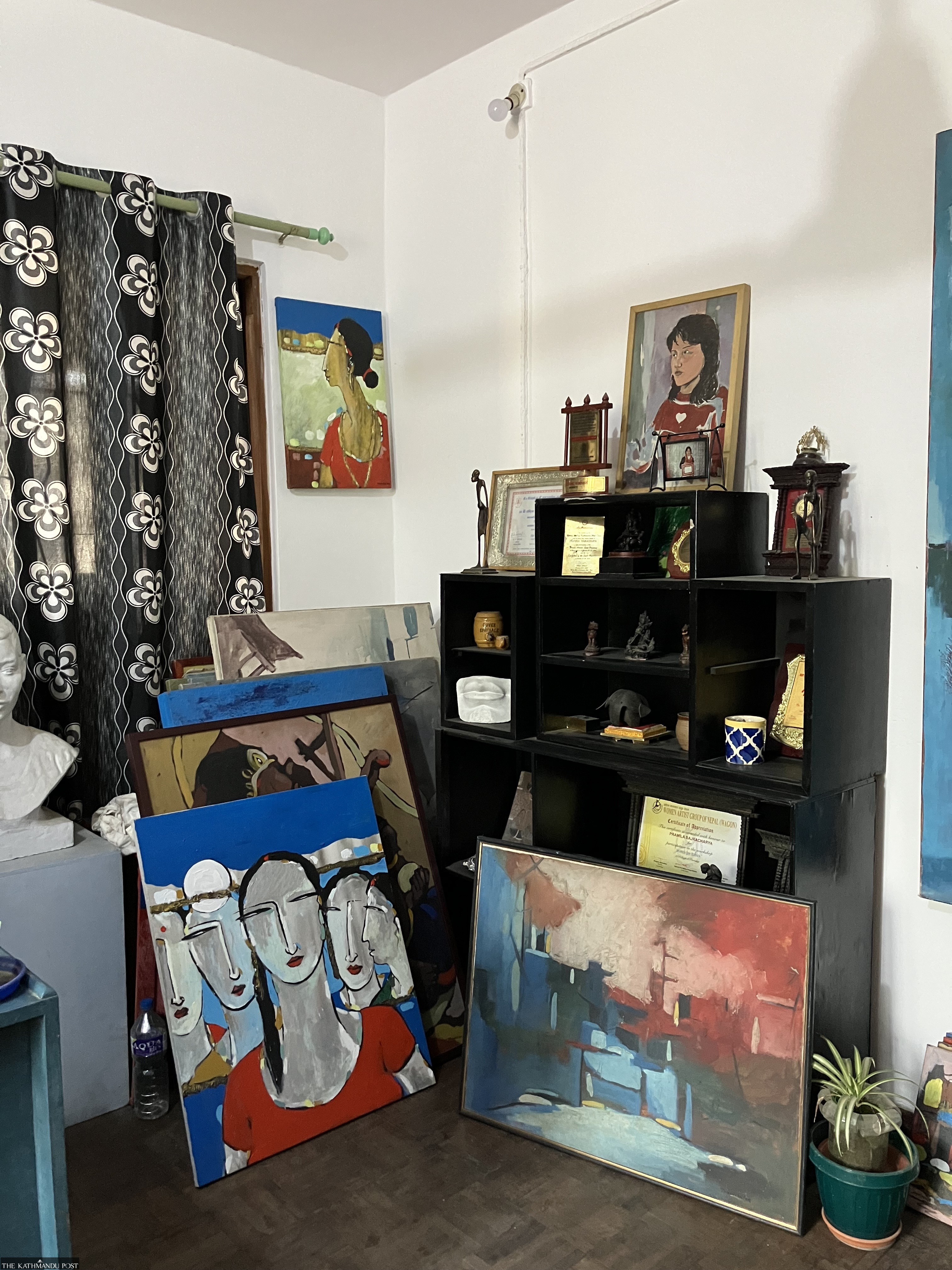
Pramila’s passion for art was often a topic of disagreement between her and her father. As she neared her mid-twenties, the pressure to get married was surmounting heavily. “There were days I’d come home late after my classes and studio work and get into an argument with my father,” she recalls. “Sani used to bring me dinner whenever I refused to eat.”
“Who’s sani?” Pramila’s face lights up. “Sani was a young girl who used to work for my family. She was one of my earliest muses. I wonder where she is now,” she says.
From how Pramila speaks of her past, despite the hardships, it feels like it was a simpler and more pleasant time. She was part of the Kasthamandap group—started by Prashant Shrestha. Well-known artist Erina Tamrakar is her contemporary and friend. “I knew getting married would restrict me from becoming somebody. So, I held on for as long as possible,” she says.
Pramila has indeed come a long way. Her art career started back in 1991 with her show at the Goethe Institute. Since then, she’s participated in over 100 group exhibitions. She also has had fourteen solo exhibitions: more notable ones being ‘Images of Landscapes’ at Siddhartha Art Gallery in 2002 and ‘Passing Through…” at Park Gallery in 2008. Her works were also up at the Himalayan Arts Festival in September last year.
“My women series are popular, but I’m also drawn to landscapes and city spaces,” she tells me. Her scapes are abstract—I can make out a faint hint of windows and electricity poles from the paintings she’s now showing me. “At night, it’s the silhouette of the buildings or the shape of the windows we see. We don’t have to draw something just as it is,” she says.
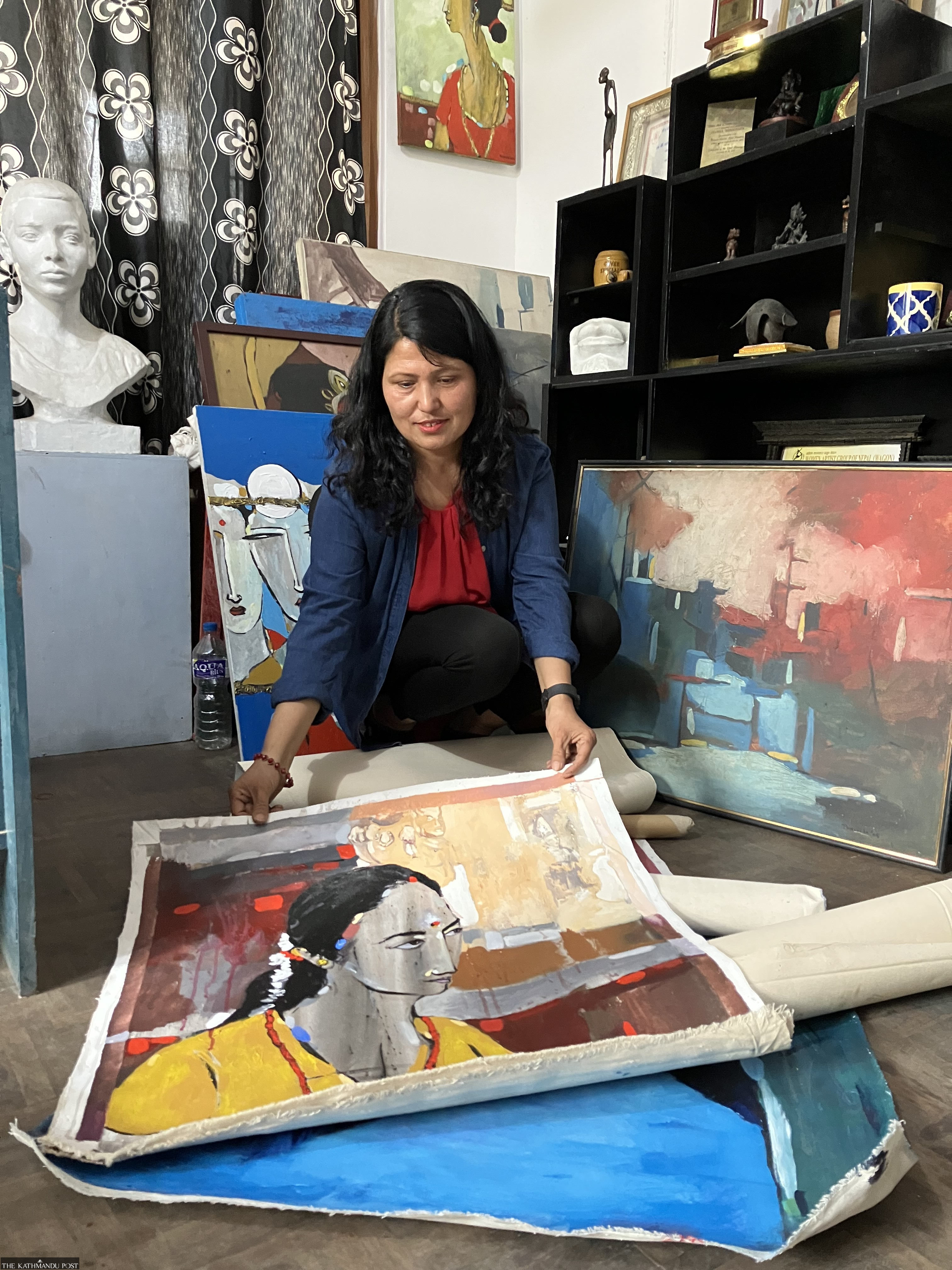
I ask her if her mood ever affects the colour palette of her works. “Oh, absolutely. Just look at the painting I drew during the lockdown,” she points to the wall behind me. Pramila’s women are there, but this time some have masks on their faces. And the blue is darker and moody. One thing about Pramila’s paintings is that the light is natural, and her colours are sombre and calm. I sensed a hint of abstract impressionism in her scapes. “Yes, when I first showed my paintings to a colleague, he told me my works reminded him of Paul Gauguin,” she recalls. “At the time, I didn’t even know what impressionism or post-impressionism was. I just drew instinctively.”
Pramila’s fervour for art took her far (and continues to), more so than her female contemporaries. But at the age of 30, she finally gave in. In 2002, she got married to a doctor. As of now, she has a teenage daughter who wants to follow in her mother’s footsteps. “My husband was very supportive, so I could continue painting even after marriage,” she says. But surely, it couldn’t have been easy. A Nepali woman wears many hats—one of a daughter, a wife, a daughter-in-law and all these hats somehow end up crushing the one that we actually want to wear. “Of course, I want to do more. I wish I could’ve done more. But I don’t look back in regret,” she says.
The same thing can be said about Pramila’s women. They are trapped in a four-cornered canvas, limited in form, their faces unrevealing. And yet, there is grace. There is warmth, pleasantness, and acceptance. Because like art historian Yasodhara Dalmia writes of Sher-Gil’s ‘Three Girls’— “Women for her were not sensual products of nature, but rather those who had suffered great handicaps and were capable of a brave new world. Amrita’s (and perhaps Pramila’s) women were those who were aware of their forlorn fate but also knew that they were capable of transcending it.” And one can’t help but agree.




 7.12°C Kathmandu
7.12°C Kathmandu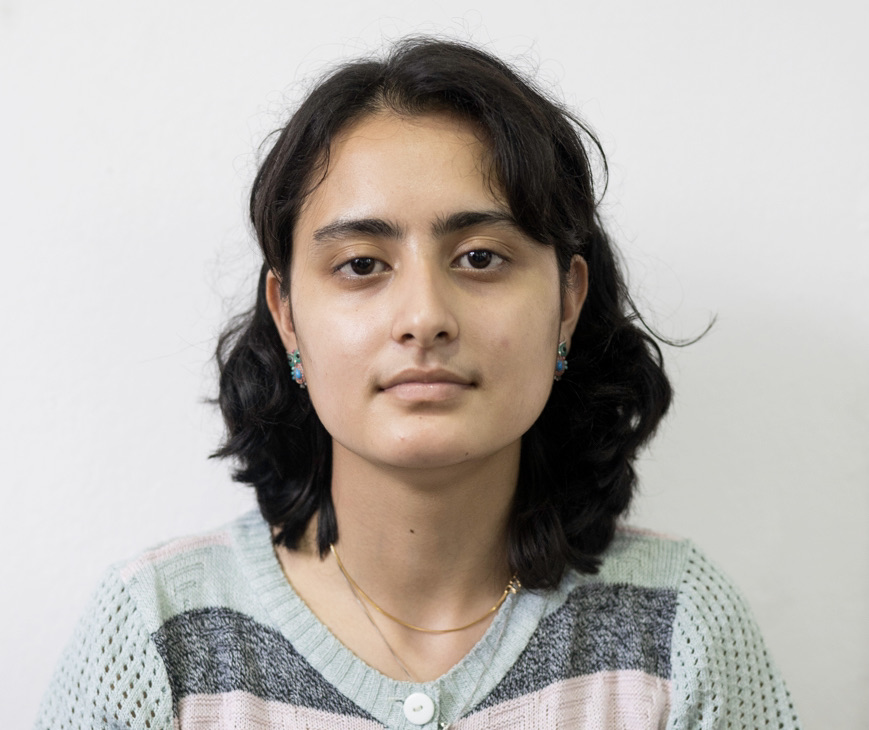
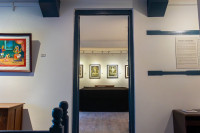
%20(1).jpg&w=200&height=120)
